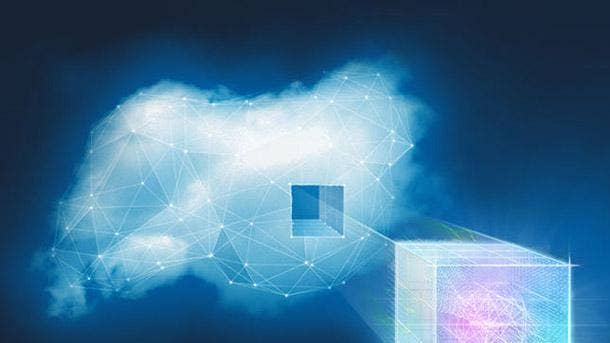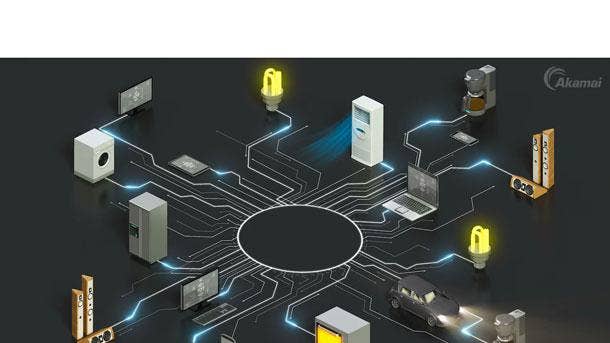VMware GM: Opportunity ‘At The Edge Is Exactly Like The Cloud’
‘We look at the edge as a massive growth opportunity for VMware and our partners as customers start to build and consume more and more applications and data that will all be delivered from the edge,’ says VMware’s Shekar Ayyar.

The Edge Is The ‘New Cloud’
VMware’s longtime telecom and edge superstar Shekar Ayyar says the market opportunities at the edge will soon become as massive and lucrative as cloud computing as the edge becomes crucial in collecting and processing massive amounts of data.
“The opportunity at the edge is exactly like the cloud. It’s sort of a new cloud in the making if you think about it,” said Ayyar, executive vice president and general manager for VMware’s Telco and Edge Cloud business, who’s been an executive at VMware for over 13 years. “The cloud created an immense amount of opportunity, but it was all about remote computing, taking things to the cloud and it gets computed somewhere. The edge is literally closer to home. We now have a much better way to create, deliver and consume services from the edge. We look at the edge as a massive growth opportunity for VMware and our partners as customers start to build and consume more and more applications and data that will all be delivered from the edge.”
The worldwide edge computing market is predicted to reach approximately $250 billion in 2024, with a compound annual growth rate of 12.5 percent over the next four years, according to IDC. The research firm expects the amount of data created over the next three years will be more than the data created in total over the past 30 years.
Vendors and forward-thinking channel partners are investing heavily in creating custom edge solutions and services to enable business outcomes for customers through data analytics. Ayyar talks to CRN about the significant opportunities at the edge, why VMware partners need to double down or formulate an edge business strategy today, as well as how it will help revolutionize video conferencing for the new remote workforce.
“You could do [video conferencing] in 3D or with 5,000 people – all of that should be possible with the snap of your fingers,” he said.

How big of an opportunity is waiting at the edge for VMware and the channel?
The opportunity is going to increase immensely. If you think about what VMware is doing today compared to the VMware five years ago, we are now talking to telcos about what they should deploy in their core and access data centers. We see 5G coming in and transforming the landscape of what these Communication Service Providers can do. So we look at VMware channel partners and say, ‘Look, you have an opportunity to go and open up a completely new set of customers that historically VMware has not dealt with.’ You could be a VAR, you could be a services provider, a system integrator, or you could be all of the above, but that is a new area opportunity for our partners.
Then you look at things like SD-WAN and SASE [secure access service edge], this offers an opportunity to go to the enterprise or commercial customer and bring them these types of solutions from VMware. Then for some subset of channel partners, they could also be managed service providers that provide a solution based on VMware and then monetize that through a service that they create and deliver. If you put all these pieces together, you now have this infrastructure that allows for greater monetizability of all of these components.

Talk about how a VMware partner can monetize the edge?
For example, if you want a security policy that says somebody with a cellphone on a VMware campus are only allowed to do these tasks but not these other tasks – something like that can be managed by Workspace ONE. But then if they want a video conference with a heavy bandwidth where they’re trying to host a large Webinar on their phone, then VMware [SD-WAN] VeloCloud on campus can decide if they need greater bandwidth and put it on a higher bandwidth channel. Furthermore, if their provider is AT&T, Verizon, T-Mobile or Dish, you can go in and provision backend capacity based on their 5G connection and link using the service provider -- that can be done because VMware technology is actually inside the data center of the service provider.
So channel partners can now create services that are higher in value-add and value delivery because they now have all of these hooks at their disposal. They can decide on their business model: is it simply taking a packaged solution and taking it to their customer; or they can provide value added services; or are they going to be a SaaS service provider themselves.

How does the edge solve the data challenges of today and in the future?
This is how you can look at the data problem and you can say the edge makes it a lot easier and more diverse in the sense of deconstructing the data problem and then solving it using edge computing. You can take complicated problems that need solving, break them up and start getting them solved in different points at the edge. That is one thing the edge makes available. A popular example is an AI algorithm that needs to be created and built. Autonomous driving is a good example of a use case.
The edge is allowing you the ability and the capacity to go in and start creating more rich models of how you can take data center computing and distribute that in different points at the edge.
The richness of data is going to essentially become orders of magnitude richer because you’re going to have all these distributed points collecting data, and the complexity of problems you can solve with edge computing is also going to become orders of magnitude higher.

How would you define the ‘edge’?
The edge can mean lots of things just like people use to talk about the cloud.
The edge is a more distributed architecture that has become a low latency, agile way for people to get what they want from an edge location. VMware has been playing in the edge in different points of that architecture already. What we see as an opportunity going forward for people to say, ‘How can we take the same level of programmability and the ability to software-defined this architecture and make it available to us at the edge?’
Our infrastructure now needs to accommodate low latency computing and proximity computing much better. That’s where the edge comes in, because the edge is now a premise that says, ‘You don’t have the compute right there on-premise and then you don’t have to go thousands of miles away. You have it at a point that is close to where you want the computing to happen, then you also have this across different points in terms of access.

Is the edge the new cloud in how the cloud created brand new markets and use cases?
The opportunity at the edge is exactly like the cloud. It’s sort of a new cloud in the making if you think about it. So much as the cloud created an immense amount of opportunity, but it was all about remote computing, taking things to the cloud and it gets computed somewhere. The edge is literally closer to home. We now have a much better way to create, deliver and consume services from the edge. We look at the edge as a massive growth opportunity for VMware and our partners as customers start to build and consume more and more applications and data that will all be delivered from the edge.
For example, as more and more video conferencing becomes the norm of the day, the networks are being stressed and stretched to provide bandwidth and capacity. Now imagine thinking about it as turbocharging that with 5G as well as having a real edge from which you can go in and connect to in order to conference. That will tremendously improve the quality of the conversation. You could do it in 3D or with 5,000 people – all of that should be possible with the snap of your fingers.